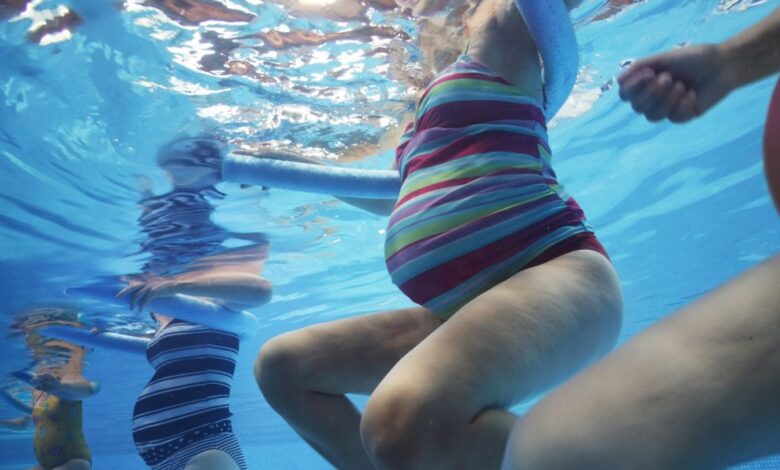Exercise may help treat and even prevent postpartum depression. Researchers recommend this weekly routine

[ad_1]

Researchers have apparently stumbled on a new prescription for postpartum depression (PPD)—one that’s free, easily accessible, and doesn’t involve pharmaceuticals.
It’s well known that working out provides a wide variety of physical health benefits, from protection against heart disease and diabetes, to improved sleep and lower blood pressure. But it can also cause physiological changes that counteract mental health conditions like depression—through a release of mood-boosting endorphins during high-intensity exercise, and a release of proteins during sustained low-intensity exercise that causes nerve cells to grow and form new connections.
Those benefits extend to PPD, apparently, according to researchers in China. They examined data from 26 studies involving 2,876 women who were pregnant or had recently given birth, in a bid to determine what type of exercise, and how much, is most effective at combating the condition, defined as depression occurring within a year after delivery.
The most effective regimen, they found: three to four sessions a week of moderate-intensity aerobic exercise, with each session lasting 35-45 minutes. Both group exercise classes and exercise led by an instructor or trainer appear to provide even greater benefits.
Patients with PPD often have reduced motivation to exercise, making developing the habit challenging, researchers said. They encourage medical providers to craft individualized exercise programs for pregnant and postpartum women that take into account their fatigue levels and interests, and to monitor their adherence as best as they can.
Study participants engaged in a wide variety of exercise options, including:
- cycling
- walking
- running
- yoga
- dance
- calisthenics
- aerobic training classes
- swimming
- stretching
Further research on the topic is needed, they added, encouraging providers and patients to interpret the study results with caution.
Potential non-drug treatments for PPDD
Exercise offers a number of physical and psychological benefits to postpartum women, researchers behind the new paper say, including:
- reduced urinary stress incontinence
- less lactation-induced bone loss
- reduced postpartum weight retention
- lower levels of anxiety
- lower levels of depression
Other potential non-drug treatments that may help ease PPD, according to the University of Wisconsin-Madison School of Medicine and Public Health, include:
- counseling or therapy, including art therapy
- social support from groups like La Leche League, or community groups based at religious centers, libraries, and/or public health centers
- copious of amounts of rest in the weeks after birth, with the support of others
- getting a minimum of 5-6 hours of uninterrupted sleep at a time, with another caregiver handling feeding
- avoiding the consumption of too much caffeine, sugar, and alcohol
- dietary additions that may fight depression, including fish, nuts, and green vegetables, all of which contain omega-3 fatty acids, and foods that are rich in B vitamins and folate, like dark, leafy vegetables, fruit juices, sunflower seeds, and aquatic foods
- adopting the Mediterranean diet, which is high in omega-3 fatty acids, B vitamins, and folate thanks to staples like fruit, vegetables, nuts, beans, and healthy fats like olive oil
- taking supplements like Vitamin D, ashwagandha, lemon balm, and St. John’s Wort
The most common complication following childbirth
PPD affects roughly 13 million women worldwide annually. making it the most common complication following childbirth. While treatments are available, including therapy and medications, the vast majority—90%—of cases go untreated, due to the high cost of therapy and potential negative side effects of medication.
In August the U.S. Food and Drug Administration approved the first pill designed specifically to treat PPD: zuranolone, trade name Zurzuvae—a steroid that works to rapidly repair dysregulated neuronal networks in the brain. It was only the second drug approved for the condition, thought to affect one in seven women. The other, Zulresso (brexanolone), was approved by the FDA in 2019. But it’s administered via IV over time and requires a hospital admission, making it inaccessible to many women.
Such a barrier doesn’t exist with the newly approved drug, taken at home once daily for two weeks. For many women, one or two courses of the medication over a year will be enough to send them into remission and keep them there, Dr. Kristina Deligiannidis—director of women’s behavioral health at Zucker Hillside Hospital in Queens, N.Y., and lead clinical trial investigator for the drug—told Fortune at the time.
In trials, zuranolone showed a “rapid reduction of depressive symptoms starting as early as day three—after two doses of medicine—and showed continued improvement through day 15,” Deligiannidis said, adding that the drug continues to work even after patients stop taking it, for 45 days in all.
The fast-acting, temporary nature of the drug stands in contrast to standard-of-care antidepressants that might otherwise be prescribed. Such medications—typically SSRIs, or selective serotonin reuptake inhibitors, which increase serotonin levels in the brain—usually take four to six weeks to begin to work, and two to three months to fully kick in, according to Deligiannidis.
Women with postpartum depression are busy sustaining a new life, their own life, and perhaps the lives of other children as well. They can’t wait months for relief, she said: “Especially for women with severe postpartum depression, this could be a life-saving option.”
“It’s like Z-Pak for depression,” Dr. Craig Chepke, medical director of Excel Psychiatric Associates in Huntersville, N.C., and occasional consultant for Zuranolone co-developer Sage Therapeutics, told Fortune at the time.
Because Zuranolone works differently than standard depression treatments, and much more quickly, “it offers a lot of hope for people who haven’t done well in the past,” he added.
Source link




